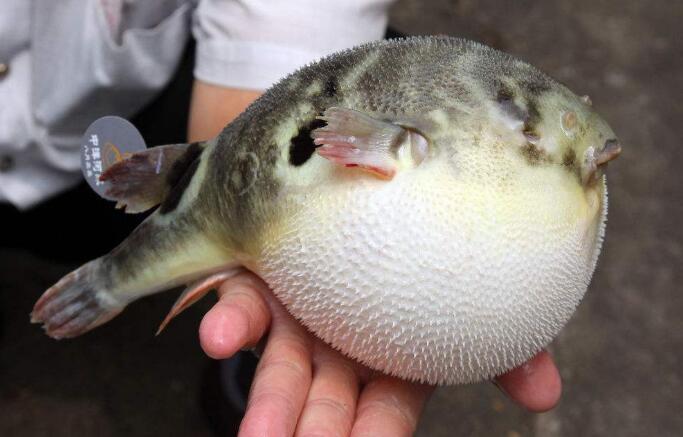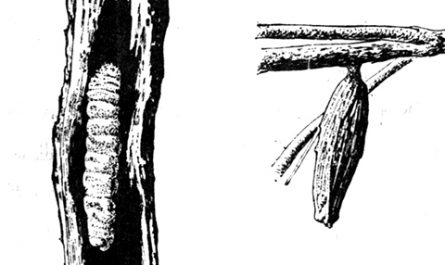The reason why people can’t eat puffer fish directly
Tetrodotoxin is a colorless needle-like crystal, belonging to an acid-resistant, high-temperature resistant animal base, and one of the most toxic non-protein substances in nature. One part in 50 million can anesthetize the nerve within 30 minutes, and the minimum lethal dose to the human body is 0.5 mg. But this very strong toxin can dissolve in water and easily dissolve in dilute acetic acid, and it will begin to be carbonized at 240°C. In a weak alkaline solution (treated with 4% sodium hydroxide for 20 minutes), it is immediately destroyed as a glucose compound and loses its toxicity. Heating at 100°C for 4 hours or 115°C for 3 hours, or heating at 120°C for 30 minutes, or heating at 200°C for 10 minutes, can completely destroy the toxins and disappear.
Pharmacological action
Tetrodotoxin has sedative, local anesthesia, antispasmodic effects, and can lower blood pressure, resist arrhythmia, and relieve spasm. As an analgesic, it can replace morphine, atropine, etc.; as an anesthetic, its anesthetic strength is more than 3000 times that of procaine, and its effect is 160,000 times stronger than the commonly used anesthetic cocaine. It also has significant effects on skin itching, prurigo, scabies, dermatitis, asthma, whooping cough, stomach cramps, tetanus spasm, enuresis, impotence and other diseases. In the international market, 1 gram of puffer fish (commonly known as puffer fish) toxin is worth 170,000 US dollars, which is 10,000 times the price of gold.
In addition, in addition to the puffer toxin, the hemostatic powder extracted from its skin also has special effects on heavy bleeding. Use fish roe and centipede to burn the powder, adjust the sesame oil and apply it to cure scabies sores; use eggs or liver to dry the powder, reconcile the sesame oil, and apply externally to the affected area to cure boils, unidentified swollen toxin, cervical lymphatic tuberculosis, and breast cancer. If you are stabbed by a stinging fish, use its blood to coat the affected area. In the pharmaceutical industry, it often uses its testis to extract protamine, arginine and fin; its ovaries, blood, internal organs, etc., can extract tetrodotoxin; liver can extract glycerol; bile can extract taurine; The skin can be made into film.
Toxic part
The part where the tetrodotoxin is located and the seasonal changes The part where the tetrodotoxin is located is the internal organs of the fish. It includes: liver, gonads, liver, gastrointestinal and blood, etc. The size of the toxic content varies due to different breeding environments and seasonal changes. According to the examples of Yangtze river puffer and artificially farmed puffer, the toxicity of each organ is compared. It is as follows: ovary → spleen → liver → blood tendons → eyes → gill rakers → skin → testis → muscles. The organ toxicity of cultured puffer fish (over 2 years old) is the same as that of wild puffer fish, but the toxin content is lower.
The toxin of pufferfish is mainly distributed in the ovary and liver, followed by the kidneys, blood, eyes, gills and skin; while the testis and muscles are non-toxic. If the fish dies for a long time, the visceral toxins can gradually penetrate into the muscles by dissolving into the body fluids. The amount of toxins often varies from season to season. The period of ovarian development is from February to May every year, and the toxicity is strong; after the eggs are laid in June to July, the ovaries degenerate and the toxicity is weakened. The liver is also the most toxic in the spring spawning period. Therefore, when you eat puffer fish fresh in late spring and early summer, you should be particularly cautious. You must choose fresh fish and strictly remove the internal organs to avoid poisoning.
Gonad
It is the ovary and the testis. The ovaries are highly toxic, which is one of the most toxic parts of the puffer fish. The testis is slightly toxic or non-toxic; the ovaries and testes are oblong, located at the back of the abdominal cavity and near the anus. The two are easy to distinguish during the reproductive period. The testes are milky white and the ovaries are light yellow; cross-sectional, the testes are white chylo, and the ovaries are granular; but after the fall, the ovaries and testes are atrophy due to the reproductive period. It is difficult to distinguish between the two.
liver
It is a large and elongated organ located on the right side of the abdominal cavity. It is connected with an enlarged stomach. The lower tip reaches near the anus. It is gray-brown and has a green gallbladder inside. The liver is the highly toxic part of the puffer fish. When eating puffer fish, you should pay special attention to it before eating. The artificially raised fish can be eaten after frying.
Skin and blood
The skin toxicity varies with the species of puffer fish, and the puffer fish skin contains little or no toxicity. The blood, especially the two so-called spinal blood clots, the spleen, is highly toxic.
stomach
The stomach is so large that it can inhale water or air to make it swell. Below the stomach is the intestine. The intestine is folded twice in the abdominal cavity to reach the anus. The stomach and intestine are also toxic, but the toxicity is much less than that of the ovary and liver.
muscle
Muscles can be regarded as non-toxic, so as long as the internal organs of the puffer fish are excavated, and then peeled and cleaned, it will not be toxic. But for a long time after the puffer fish dies, the toxins from the internal organs dissolve in the body fluids. After a long time, it can penetrate into the muscles. Especially for the production of fish fillets (fish sashimi), it is safer to soak with 2% to 5% lye.
The ovary and liver of the puffer fish are the second most toxic organs in the viscera of the puffer fish. The amount of toxic content often varies with the seasons. From February to May each year, the ovarian development period is the period of strong toxicity, up to 6 months. ~7 months later, the spawning period has passed, the ovaries have shrunk, and the toxicity has also weakened. The liver and ovary are the same, and they are generally more toxic in spring. In addition, different species have different toxic levels, and even the same species sometimes have different toxic levels. In general, females are more toxic than males.
We have done a toxicity study on the obscured oriental porpoise, taking the ovaries, muscles, testis, and liver of the sexually mature obscured oriental porpoise at 3 years old (2 winter age) to conduct toxicity tests on mice. If the toxicity of 1000 mouse units (ie MU) is equivalent to 1g of toxic pufferfish organs that can kill 1kg of mice, the virulence of ovary, muscle, and testis is less than: 6.6MU, 4.5MU, 8.1MU, respectively. 0.0005 grams of tetrodotoxin is enough to kill a puppy weighing 2 kilograms. Once a person is poisoned after consumption, the toxicity will attack quickly, and generally it cannot be rescued.
Puffer fish are full of treasures, tetrodotoxin, which is also widely used in medical and clinical medicine. It can be made into detoxification agents, anesthetics, sedatives, etc., and can also be used for interventional treatment of cancer.
Clinical symptoms
The incubation period is 0.5 to 3 hours, and symptoms of the digestive tract appear first, such as nausea, vomiting, diarrhea, abdominal pain, and then sensory and motor dysfunction, numbness of the lips, tongue, extremities and body, and limb weakness. Eyelid drooping, ataxia, hoarseness, severe cases may have difficulty breathing, arrhythmia, conduction block, coma; finally respiratory and circulatory failure, tetrodotoxin detoxification and excretion in the human body faster, if not after 8 hours Most of the dead can recover.
Poisoning diagnosis
People who eat pufferfish should consider pufferfish poisoning if they have symptoms of digestive tract and nervous system. Toxin identification: Take 5 ml of urine and inject it into the abdominal cavity of male toads. The poisoning symptoms are positive within 0.5 hours.
Poisoning treatment
It has been reported that the immediate early use of L-cysteine intravenous injection can quickly detoxify, respiratory muscle paralysis with artificial respirator and tracheotomy; muscle paralysis, adult intramuscular injection of strychnine 2~3ml/time, children should reduce it. Use corticosteroids as early as possible and use B vitamins.
Contraindications for puffer fish
Salmon and puffer fish are life-threatening if they eat the same food. When eating puffer fish, avoid soot poisoning and death.
Fresh pufferfish are generally non-toxic except for their muscles. There are toxic substances in their head, skin, eyes, blood, and internal organs (especially the ovaries and liver), which are called tetrodotoxins, which are highly toxic. The lethal dose of tetrodotoxin to adults is 300 mg. Puffer fish that die for a long time must not be eaten, because the toxins from the internal organs will gradually penetrate into the muscles. Some puffer fish are not only poisonous in their internal organs, but also in their muscles. Normal cooking methods cannot remove this toxin. It is best not to cook and eat puffer fish by yourself. Relatively speaking, it is safer to eat puffer fish in regular hotels, because some restaurants hire puffer fish killers at high prices to handle puffer fish.
Don’t look at the cute puffer fish. When in danger, the body will bulge into a small prickly ball, like an elf in anime, but the more beautiful things are more likely to endanger human lives, like puffer fish, it is highly poisonous The toxin of pufferfish has a very rapid onset, and it takes half a day to get sick. If the rescue is not timely, it is easy to be life-threatening.
Although the puffer fish is highly toxic, it also attracts many curious people to take a bite because of its tender and delicious meat.
Once the puffer fish is poisoned by improper handling or gluttony, you should be sent to the hospital for treatment immediately.
In order to prevent accidents, everyone should not be gluttonous with fluke. Even if you really want to eat, it is not recommended to cook at home. The chefs at regular hotels will have more experience in dealing with puffer fish.
Anyway, you still have to be careful when you eat pufferfish. Puffer fish is a poison, but it is also a medicine, which has a good therapeutic effect on some cancers.






